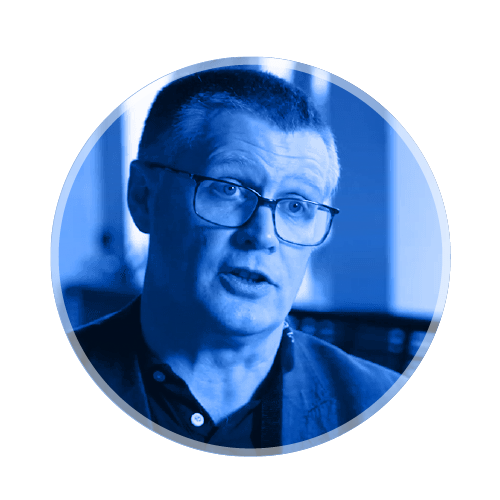OceanICU Webinar: Decision Support Tools
- Thursday, 19th of September | 15:00 (CET)
The OceanICU Decision Support Tools Webinar was a Technical Masterclass!
OceanICU provided an in depth look at how EMODnet and Copernicus Marine via the EDITO platform, are helping OceanICU use Big Data to build its decision support tools, and how the project will use Machine Learning with Big Data.
Thanks to our expert panellists Conor Delaney, Jorn Bruggeman and Patrizio Mariani of Work Package 7, and to our special guest Marina Tonino (Mercator Ocean) for the insightful look into how they are leading new innovative pathways toward providing crucial data needed in support of the EU Mission “Restore our Ocean and Waters by 2030”
Missed the live event? Check out the recording and experience it for yourself.
The OceanICU project is designing new Decision Support Tools (DSTs)—modelling tools—to allow us to predict the impact of natural processes and industry actions and of which will aid scientists, industry and policy makers, in exploring the complex tradeoffs involved in determining the optimal resource exploitation strategy. In consultation with stakeholders, the models, scenarios and user experience of these DSTs will be developed over the course of the project to ensure they evolve into effective tools to aid policy makers involved in making decisions around how to deliver the EU Green Deal.
MEET THE PANELLISTS

Dr. Jorn Bruggeman
Principal, Bolding & Bruggeman ApS
Richard is the lead coordinator of the OceanICU project. He has worked since 2019 at NORCE in Bergen as Director of the Ocean Thematic Centre within the ICOS research infrastructure. This involves helping the surface ocean pCO2 observing community within Europe make the highest quality observations and in establishing more secure funding routes for surface Ocean C observations. Prior to his move to Bergen he served as Chair of the Ocean Biogeochemistry and Ecosystems Research Group in the UK National Oceanography Centre. He holds an honorary chair in Ocean Biogeochemistry at the University of Southampton in the UK.

Dr. Marina Tonani
Ocean Forecast Expert, Mercator Ocean International
Project Manager, EDITO-Infra
Richard is the lead coordinator of the OceanICU project. He has worked since 2019 at NORCE in Bergen as Director of the Ocean Thematic Centre within the ICOS research infrastructure. This involves helping the surface ocean pCO2 observing community within Europe make the highest quality observations and in establishing more secure funding routes for surface Ocean C observations. Prior to his move to Bergen he served as Chair of the Ocean Biogeochemistry and Ecosystems Research Group in the UK National Oceanography Centre. He holds an honorary chair in Ocean Biogeochemistry at the University of Southampton in the UK.

Dr. Conor Delaney
Technical Coordinator EMODnet
Richard is the lead coordinator of the OceanICU project. He has worked since 2019 at NORCE in Bergen as Director of the Ocean Thematic Centre within the ICOS research infrastructure. This involves helping the surface ocean pCO2 observing community within Europe make the highest quality observations and in establishing more secure funding routes for surface Ocean C observations. Prior to his move to Bergen he served as Chair of the Ocean Biogeochemistry and Ecosystems Research Group in the UK National Oceanography Centre. He holds an honorary chair in Ocean Biogeochemistry at the University of Southampton in the UK.

Dr. Patrizio Mariani
Professor, DTU, Group Leader Observation Technology
Richard is the lead coordinator of the OceanICU project. He has worked since 2019 at NORCE in Bergen as Director of the Ocean Thematic Centre within the ICOS research infrastructure. This involves helping the surface ocean pCO2 observing community within Europe make the highest quality observations and in establishing more secure funding routes for surface Ocean C observations. Prior to his move to Bergen he served as Chair of the Ocean Biogeochemistry and Ecosystems Research Group in the UK National Oceanography Centre. He holds an honorary chair in Ocean Biogeochemistry at the University of Southampton in the UK.
Questions from the Audience

Answered by Matthias Haeckel
These types of experiments will be more challenging to conduct. A solution could be Autonomous Underwater Vehicles (AUVs) could be deployed to collect information at different water depths. This would allow for research to be conducted in three dimensions compared to the current work being done in two dimensions with equipment that is confined to the seafloor. .
Global Sea Mineral Resources (GSR) the deep sea exploratory division of the Deme Group, is aiming at testing their next collector stage around 2027, which will include a riser system to transport the nodules to the surface and re-inject the wastewater stream. We hope to be at the site to do the monitoring when this test happens.
We have elevated particle concentrations, leading to flocculation and increased sinking of particles and scavenging of natural particles from the water column. Therefore, I would expect that we get an increased export of organic and inorganic matter to the seafloor with the re-injection of a wastewater stream.
It is critical to regulate at which water depth the re-injection of this wastewater stream is allowed to take place. If the re-injection of waste water is done in the surface waters, where we have most phytoplankton and zooplankton, we can expect that the impacts –at least on a regional scale— will probably be severe. However, if the re-injection takes place below two or three km deep, the impact on the carbon cycle process will be much smaller. This is because typically 98% of the organic carbon has already been re-mineralized by the time it reaches depths of two to three km.
In terms of the particle concentrations we measured, those in the far field were still significantly higher than the background concentrations—about 10 to 100 times higher— reaching several hundred micrograms per litre. However, we don’t know whether this has a significant impact. These findings align with sediment plume dispersion modelling research conducted in studies 20 to 30 years ago, which predicted that around 95% of the particles would settle within a few hundred metres, leaving approximately 5% in suspension for a period of weeks, months, or possibly even years. What we observed was a limited mixing of this sediment plume with the surrounding bottom waters within distances of a few kilometres. These results were surprising and suggest that these high particle concentrations behave as a dense gravity flow and remain relatively distinct from the surrounding water mass.
The release of the metals into the water column was a surprising result in our study. What remains unclear is the duration for which these metals persist in dissolved form. It’s important to note that dissolved metals generally exhibit a higher toxicity compared to solid metals, as demonstrated in ecotoxicity studies. Investigating the time frame during which these metals remain in their dissolved state and in situ ecotoxicity studies on deep-sea fauna are the critical next steps.
Further research into ecotoxicity is imperative, but it presents significant challenges. Successful transfers of live deep-sea fauna to the surface have not been achieved due to the depressurization effects that the fauna does not survive, making it essential to conduct ecotoxicity studies directly in the deep ocean. Existing experiments on the impacts of polymetallic nodule mining have largely focused on shallow water species, which are often used to higher metal concentrations in their natural environment, leaving uncertainty about the applicability of these findings to deep-water organisms. Therefore, understanding the ecotoxic effects of deep-sea mining requires dedicated research conducted in situ, where deep-sea organisms naturally reside.
Another critical area requiring further research involves understanding of the species connectivity in deep-sea ecosystems. Will disturbances caused by nodule mining result in the separation of populations, thereby disrupting genetic connectivity between different populations? We do know that species exhibit connectivity over vast distances, spanning thousands of kilometres across the entire Clarion-Clipperton Zone (CCZ), and for some species, this connectivity extends across the entire Pacific Ocean. The potential consequences of deep-sea mining on this species connectivity remain largely unknown, but are critical for assessing far-reaching and long-term consequences of deep-sea mining.
Furthermore, we lack a comprehensive understanding of the ecosystem dynamics in the deep sea, particularly regarding the food web and the connections between the benthic and pelagic systems. Many questions remain unanswered in terms of how these interactions and relationships function.
The particle size range in the plume in the Global Sea Mineral Resources (GSM) area that was observed with a particle camera was 61-313 micrometres (D25-D75 range), the smallest detected particles were 15 micrometres (Gazis et al., accepted, Nature Communications). Grain size analyses of sampled plume material are still ongoing.
In addition to the answer to Q6, it is also important to establish threshold values of suspended particle concentrations and thickness of depositional blanketing impacting the pelagic and benthic fauna and the ecosystem functioning.
Our recommendation is to only permit injection of the waste discharge at the seafloor – as scientists have suggested already 25 years ago. Injection into the upper 1000-1500 m should certainly be forbidden.
I do not know if the industry is looking into this. There have been lab experiments on flocculation in general and in the context of deep-sea mining. Colleagues at BGR (Geological Survey of Germany) have studied how adding carbonates (they are known to do this) increase flocculation of suspended Clarion-Clipperton Zone (CCZ) sediment in the lab. However, the additional environmental impacts of adding flocculants to the suspended plume can also create other environmental impacts (e.g. toxic effects) and legally this may possibly fall under dumping (for the waste discharge). The heated debate on adding dispersants into oil spills may be a helpful example in this discussion.
The Metals Company is conducting research in the area directly adjacent to the BGR (Geological Survey of Germany) contract area. I have watched one or two of their webinars but the information they have provided is limited. I’m looking forward to more detailed information to be able to compare my findings with theirs.
This depends on the location of the mining operation. For the Solwara project In Papua New Guinea impacts on fishing and tourism was debated. In The Clarion-Clipperton Zone (CCZ) fishing may be impacted – Van der Grient and Drazen published a paper on this issue last year.
For mining of polymetallic nodules (containing oxidized metal species) this may be the case, but for seafloor massive sulphides (containing reduced metals) this is likely different. In addition, we also need to consider cumulative impacts from both (and additional) effects. Overall, we need to establish the ecotoxicity in situ as discussed earlier (see answers to Q5 and Q6).

Answered by Richard Sanders
